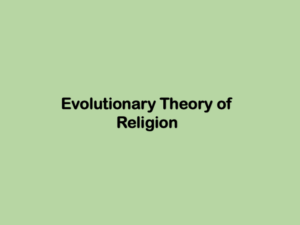Oldest Copies of Daniel
The date of the Book of Daniel is a controversial topic, but it can be broken down into two different views: an early date and a late date. The early date holds that Daniel was written by a Hebrew named Daniel in the 6th Century BC (during the events described in the book). The late date holds that Daniel was written several hundred years later during a period known as the Maccabean Revolt (167-160 BC) and was written by an author pretending to be a Hebrew named Daniel. At the heart of the matter is the question of whether the Bible can predict the future. In this post, we discuss the oldest existing copies of the Book of Daniel.

Posted: 13 May, 2024
Edited: 25 July, 2024
When Was Daniel Written? Part 3
What is a Scroll?
When talking about ancient copies of the Bible, a few definitions are helpful. The original copy of an ancient document, the one the author first wrote by hand, is called an autograph. A manuscript is a handwritten copy of the original document, (or far more commonly a copy of a copy of a copy) either written on paper (papyrus) or animal skin (parchment). While there are no existing autographs of the books of the Bible, there are numerous manuscript copies of the Bible. When we have an existing manuscript of a book, it is called an extant manuscript. Manuscripts are important, because the Guttenberg printing press was not invented until 1450 AD, so all copies of the Bible prior to that time had to be hand copied, usually, but not always, by a professional scribe. This means that prior to printing, copies of the Bible were not readily available to the common person.
Books are also a fairly recent form of reading. In ancient times, documents were copied onto a scroll (either papyrus or parchment) and stored as a scroll. Since scrolls have limited space, ancient copies of the Bible as we know it today were scrolls of (usually) individual books of the Bible. In order to read the entire Bible, you’d have to collect scrolls of all the individual books.
Over the years, certain Biblical scrolls became to be accepted as canon, or influenced by God. These scrolls were collected into what we know as the Bible. An early form of scrolls collected into a book form was known as a codex, and the oldest codex of the Old Testament has been dated to around 1,000 AD.
The Dead Sea Scrolls
So, when we’re talking about truly ancient copies of the Bible, were not talking about the entire Bible, but individual scrolls. The oldest existing scrolls of the Bible that exist today are the scrolls that were found in the caves at Qumran. Qumran was a Jewish community near the Dead Sea that was active from around the second century BC and the first century AD (roughly around the time of Jesus of Nazareth). The scholarly consensus, although not universal, is that Qumron was inhabited by a religious sect known as the Essenes.
Qumran is best known as the site of the Dead Sea Scrolls, as series of ancient manuscripts that were discovered between 1946 and 1956. The scrolls were discovered in a series of caves near Qumran and include, among other documents, the oldest existing copies of the Old Testament. These scrolls are important, because they predate the Codex Leningradensis, the accepted standard Hebrew reference for the Old Testament by almost 1,000 years.
Daniel Manuscripts at Qumran
The Dead Seas Scrolls contain 225 biblical tests, including fragments of all the books of the Old Testament except for the Book of Ruth. There are 8 manuscripts of the Book of Daniel and one document that quotes the Book of Daniel. This is an extraordinary number of copies, more than Exodus (9), Deuteronomy (8) or Leviticus (5), and is a testament to the special importance the scribes at Qumran assigned to Daniel. Only Psalms has more copies with 13 fragments discovered at Qumran. All of the manuscripts are written in either Hebrew or Aramaic, depending on the section of Daniel contained in the manuscript (parts of Daniel are written in Hebrew and parts are written in Aramaic). The Qumran manuscripts do not contain any copies of the apocryphal additions to Daniel. (The Apocrypha is a collection of Old Testament books that some Christian faith traditions consider canon, but others do not).
The Daniel scrolls have been dated using paleography, or the dating of a manuscript based on the style of writing. Paleography is generally considered accurate within about 50 years, but carbon 14 dating of select Dead Sea Scrolls has produced dates that are roughly the same as those produced by paleography.
When talking about Qumran manuscripts, the manuscripts are labeled with the cave where it was discovered, Q for Qumran and the book it contains. For example, 4QDana, which is dated to about 60 BC was discovered in cave 4 at Qumran and contains portions of the book of Daniel.
4QDanb, also found in cave 4, is dated to about 60 AD, but the oldest of the 8 manuscripts is 4QDanc, which has been dated to around 125 BC. This date is significant because the late date view of the authorship holds that Daniel was written around 165 BC. At face value, this date would seem to support the Late Date, because 125 BC is very close to 165 BC, so 4QDan represents a copy very close to the original autograph.
However, the analysis is not that simple. Early date proponents point out that not only are there multiple copies of Daniel at Qumran, but there is another document that quotes Daniel with the language, as it is “written in the book of Daniel the Prophet.” The large number of manuscripts and the language used to quote from Daniel strongly suggest that the community at Qumran considered Daniel to be cannon, or inspired by God.
Proponents of a late date argue that forty years is not enough time for Daniel to be considered canon. They also argue that it is highly unlikely that a book that was written to encourage the Jews during the Maccabean Revolt would be considered canon. For the scribes at Qumran, the Maccabean Revolt was a fairly recent event and thye would have most likely known of the recent authorship and its purpose.
Dr. Hasel, on Old Testament scholar, commented on this reasoning in a 1992 article.
According to current historical-critical opinion, the book of Daniel originated in its present form in the Antiochus Epiphanes crisis, that is, between 168/167 – 165/164 BC. It seems very difficult to perceive that one single desert community should have preserved such a significant number of Daniel manuscripts if this book had really been produced at so late a date. The large number of manuscripts in this community can be much better explained if one accepts an earlier origin of Daniel than the one proposed by the Maccabean hypothesis of historical-critical scholarship, which dates it to the second century BC.
Hasel G. New light on the Book of Daniel from the Dead Sea Scrolls.
Conclusion
The Dead Sea Scrolls contained multiple copies of Daniel, more than many other books of the Old Testament. The manuscripts have been dates from as early as around 125 BC to around 60 AD. The number of manuscripts suggest Daniel was held in high esteem in Qumran and was considered canon, or inspired by God.
Since the Maccabean Revolt occurred around 165 BC, either the oldest copy of Daniel at Qumran represents a very close copy of the autograph (original copy) or it represents a copy of a manuscript that far predates the date set by the Late Date proponents of Daniel.
Previous: The Oldest Copies of Daniel




